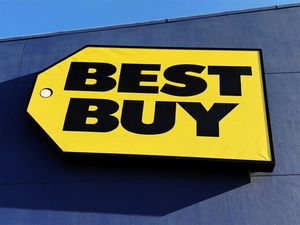Learn what to look for in protein sourcing and single-protein options when buying in bulk.
Raw feeding has grown far beyond a niche market—it’s now a core consideration for pet stores, breeders, and animal health professionals across North America. But as demand surges, so do questions about ingredient quality and sourcing in the wholesale space.
Pet stores and bulk buyers face a unique challenge: offering premium raw dog food at scale while protecting brand reputation and ensuring consistent quality. That’s easier said than done when supply chains vary and transparency isn’t always a given. Here's how to evaluate the raw dog food you buy—and ensure it meets the standards your customers expect.
Why Ingredient Transparency Is Non-Negotiable
In the wholesale market, raw pet food is often bundled in bulk with limited labeling or vague protein descriptors. For pet stores, this lack of transparency can quickly turn into a customer trust issue.
Look for suppliers who:
-
Clearly identify all proteins used (e.g., “beef muscle” instead of “meat by-product”)
-
Offer single-protein formulas, ideal for dogs with sensitivities
-
Include bone and organ ratios backed by nutritional science
This level of transparency isn’t just good practice—it’s essential for store owners who need to confidently stand behind every product they sell.
Avoiding Filler Ingredients That Undermine Value
Not all raw diets are created equal. Many low-cost bulk providers add inexpensive fillers like excess bone, ground carcass, or high levels of starchy vegetables to extend product volume. While this might stretch margins, it compromises the digestibility and nutritional value of the food.
Instead, prioritize suppliers whose formulations balance:
-
Muscle meat
-
Ground bone (within safe calcium-phosphorus ratios)
-
Select organs (like liver and kidney, not just trimmings)
Choosing a trusted source of raw dog food can help ensure the meals are both complete and species-appropriate—something customers increasingly demand and research independently.
What Digestive Tolerance Teaches Us About Quality
Pet owners often return raw food products because their dogs reject them—or worse, suffer digestive distress. In many cases, the problem traces back to inconsistencies in fat content, improper ratios, or sudden changes in diet.
When sourcing wholesale raw food:
-
Ask if transitional meal plans or starter packs are available
-
Check for formulation standards aligned with AAFCO or NRC recommendations
-
Look for nutrient analysis reports or guaranteed analysis labels
Offering products with proven digestibility reduces customer churn, enhances product trust, and cuts down on refund requests or negative feedback.
Bulk Buying Doesn’t Mean Lower Standards
It’s tempting to base purchasing decisions solely on cost-per-pound, but for pet stores, long-term profitability often depends on customer satisfaction and brand loyalty. That means raw dog food must be judged on more than price.
Many reputable wholesale providers offer:
-
Tiered pricing with volume discounts
-
Transparent sourcing (including farm-of-origin data)
-
Batch tracking and quality control assurance
This makes it possible to scale while maintaining confidence in the quality you’re providing to your customer base.
Additional Resources
For retail professionals exploring options in the Canadian wholesale market, you can find more detail about dog food wholesale programs that prioritize quality ingredients and transparent sourcing.
-
Canadian Veterinary Medical Association – Raw Feeding Statement
-
AAFCO – Nutritional Guidelines for Dogs
-
Wholesale Raw Dog Food: High-Quality, Cost-Effective Solutions for Pet Stores in Canada | All Raw Dog Food
Media Contact
Company Name: Allrawdogfood
Contact Person: Michael Johnson
Email: Send Email
Country: Canada
Website: https://allrawdogfood.ca/







